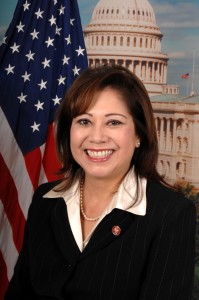
Unemployment Rate Fell to 9.1 Percent in July
Total
nonfarm payroll employment rose by 117,000 in July, and the
unemployment rate was little changed at 9.1%, the
US Bureau of Labor Statistics reported today. Job gains occurred in health care, retail trade, manufacturing, and mining. Government employment continued to trend down.
Household Survey Data
The number of unemployed persons (13.9 million) and the unemployment rate (9.1%) changed little in July. Since April, the unemployment rate has shown little definitive movement. The labor force, at 153.2 million, was little changed in July.
Among the major worker groups, the unemployment rates for adult men (9.0%), adult women (7.9%), teenagers (25.0%), whites (8.1%), blacks (15.9%), and Hispanics (11.3 percent) showed little or no change in July. The jobless rate for Asians was 7.7%, not seasonally adjusted.
The number of persons unemployed for less than 5 weeks declined by 387,000 in July, mostly offsetting an increase in the prior month. The number of long-term unemployed (those jobless for 27 weeks and over), at 6.2 million, changed little over the month and accounted for 44.4% of the unemployed.
The civilian labor force participation rate edged down in July to 63.9%, and the employment population ratio was little changed at 58.1%.
The number of persons employed part time for economic reasons (sometimes referred to as involuntary part-time workers) was about unchanged in July at 8.4 million. These individuals were working part time because their hours had been cut back or because they were unable to find a full-time job.
In July, 2.8 million persons were marginally attached to the labor force, little changed from a year earlier. (These data are not seasonally adjusted.) These individuals were not in the labor force, wanted and were available for work, and had looked for a job sometime in the prior 12 months. They were not counted as unemployed because they had not searched for work in the 4 weeks preceding the survey.
Among the marginally attached, there were 1.1 million discouraged workers in July, about the same as a year earlier. (These data are not seasonally adjusted.) Discouraged workers are persons not currently looking for work because they believe no jobs are available for them. The remaining 1.7 million persons marginally attached to the labor force in July had not searched for work in the 4 weeks preceding the survey for reasons such as school attendance or family responsibilities.
Establishment Survey Data
Total nonfarm payroll employment increased by 117,000 in July, following little growth over the prior 2 months. Total private employment rose by 154,000 over the month, reflecting job gains in several major industries, including health care, retail trade, manufacturing, and mining. Government employment continued to decline.
Health care employment grew by 31,000 in July. Ambulatory health care services and hospitals each added 14,000 jobs over the month. Over the past 12 months, health care employment has grown by 299,000.
Retail trade added 26,000 jobs in July. Employment in health and personal care stores rose by 9,000 over the month with small increases distributed among several other retail industries. Employment in retail trade has increased by 228,000 since a recent low in December 2009.
Manufacturing employment increased in July (+24,000); nearly all of the increase was in durable goods manufacturing. Within durable goods, the motor vehicles and parts industry had fewer seasonal layoffs than typical for July, contributing to a seasonally adjusted employment increase of 12,000.
Manufacturing has added 289,000 jobs since its most recent trough in December 2009, and durable goods manufacturing added 327,000 jobs during this period.
In July, employment in mining rose by 9,000; virtually all of the gain (+8,000) occurred in support activities for mining. Employment in mining has increased by 140,000 since a recent low in October 2009.
Employment in professional and technical services continued to trend up in July (+18,000). This industry has added 246,000 jobs since a recent low in March 2010. Employment in temporary help services changed little over the month and has shown little movement on net so far this year.
Elsewhere in the private sector, employment in construction, transportation and warehousing, information, financial activities, and leisure and hospitality changed little over the month.
Government employment continued to trend down over the month (-37,000). Employment in state government decreased by 23,000, almost entirely due to a partial shutdown of the Minnesota state government. Employment in local government continued to wane over the month.
The average workweek for all employees on private nonfarm payrolls was unchanged over the month at 34.3 hours. The manufacturing workweek and factory overtime for all employees also were unchanged at 40.3 hours and 3.1 hours, respectively. In July, the average workweek for production and nonsupervisory employees on private nonfarm payrolls was 33.6 hours for the sixth consecutive month.
In July, average hourly earnings for all employees on private nonfarm payrolls increased by 10 cents, or 0.4%, to $23.13. Over the past 12 months, average hourly earnings have increased by 2.3%. In July, average hourly earnings of private-sector production and nonsupervisory employees increased by 8 cents, or 0.4%, to $19.52.
The change in total nonfarm payroll employment for May was revised from +25,000 to +53,000, and the change for June was revised from +18,000 to +46,000.












Vision Payroll